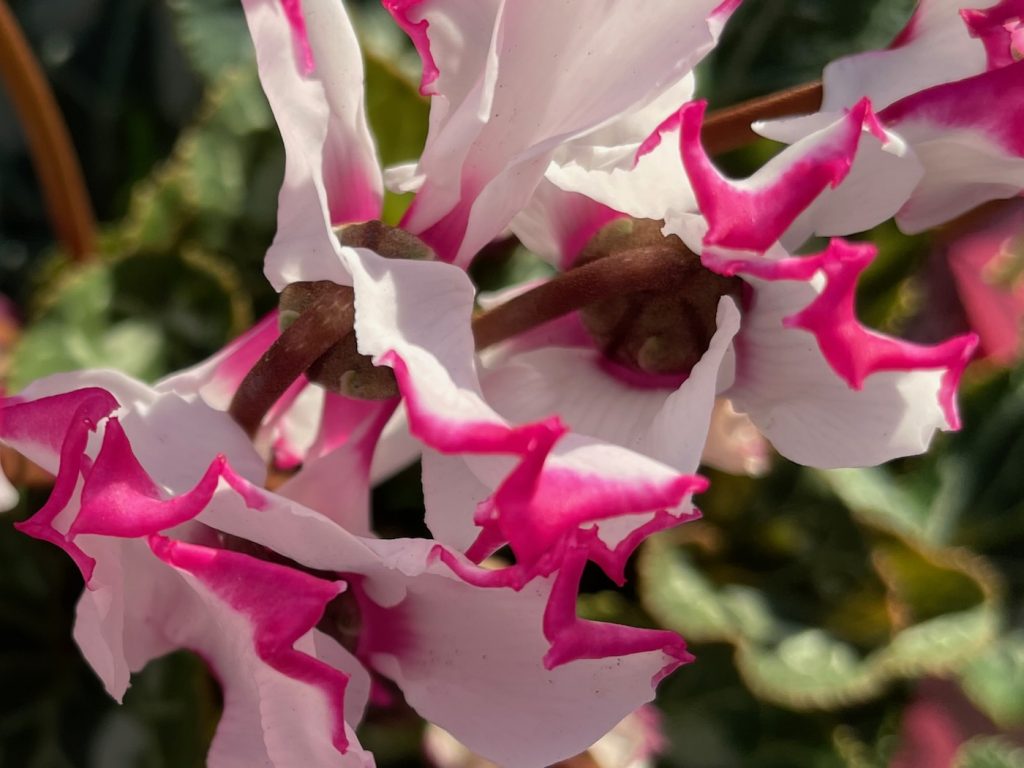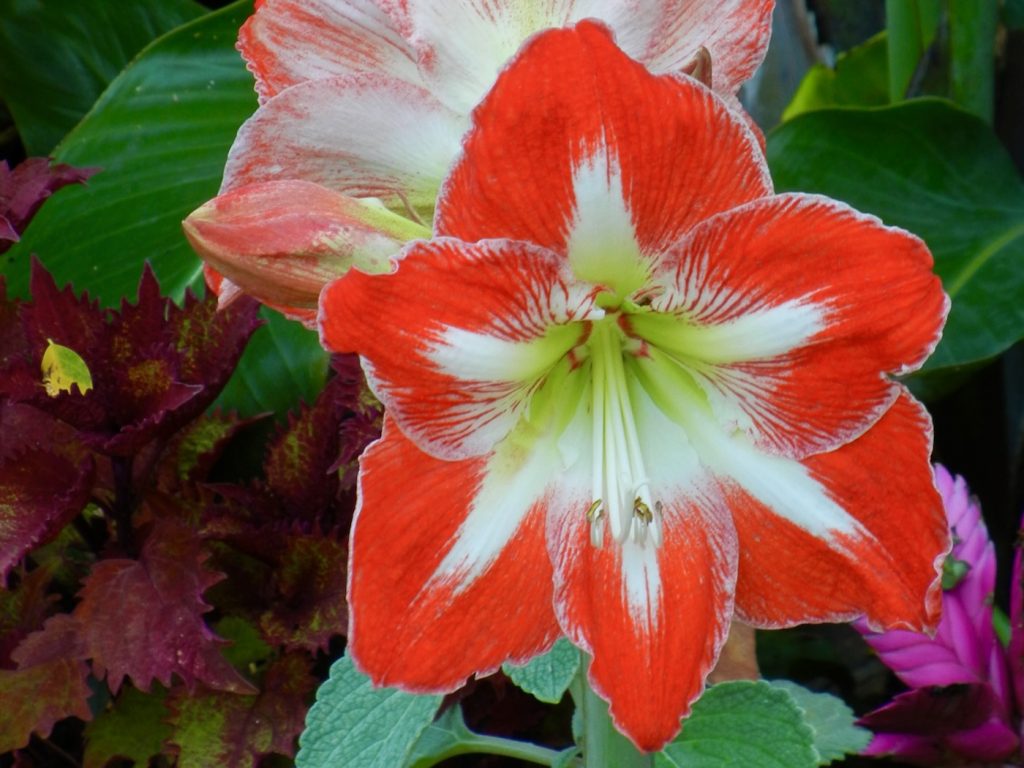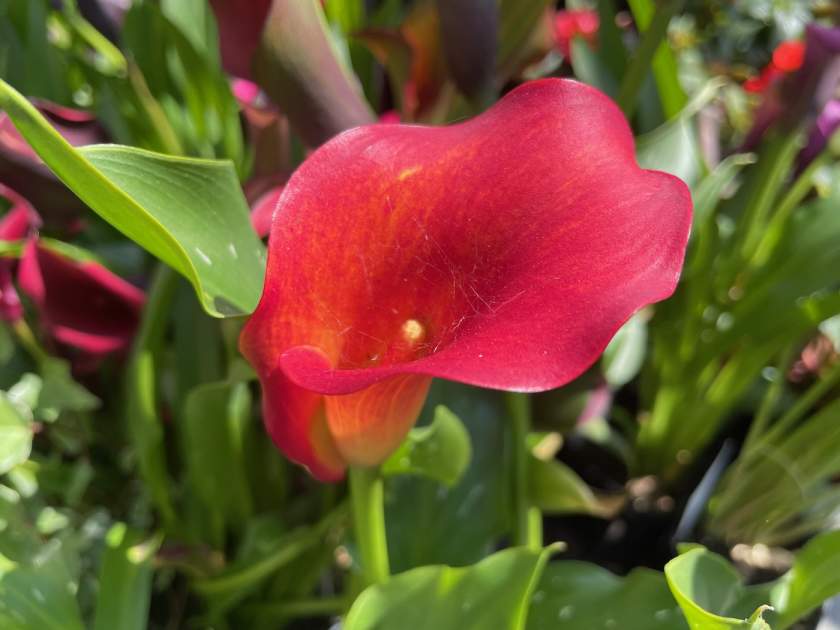Lilium lancifolium: Exquisite Beauty of the Tiger Lily
Background and Characteristics: Lilium lancifolium, commonly known as Tiger Lily or Lilium tigrinum, is a bulbous perennial that belongs to the Liliaceae family of plants. This stunning species is native to China and Japan, where it thrives in a variety of environments. With its clump-forming growth habit and vibrant orange flowers adorned with black or crimson spots, the Tiger Lily stands out as a captivating addition to any garden or landscape. Growing up to 5 feet (1.5 meters) tall, this impressive lily blooms during the summer and fall, adding a burst of color and elegance to the surroundings.
Description and Habitat: The flowers of Lilium lancifolium grace the garden with their radiant orange hues and striking spotted patterns. Held on tall and erect stems, these blossoms create a dramatic display that demands attention. Due to their height and weight, it is advisable to use stakes for support and to ensure the lilies remain upright and secure. The plant’s clump-forming growth habit and ability to produce bulblets, known as bulbils, along the stem contribute to its resilience and potential for propagation. While the flowers wither over time, they are quickly replaced by new blooms, providing an extended period of floral beauty.
Cultivation of Lilium lancifolium:
Sunlight: Tiger Lilies thrive when grown in a location that receives full sun or partial shade. They are adaptable and can tolerate varying light conditions, making them versatile for different garden settings.
Soil and Watering: Lilium lancifolium adapts well to various soil types but prefers average, moist, and well-drained soil. It is essential to ensure the soil has good drainage to prevent waterlogging, as excessive moisture can lead to root rot. Water the plants regularly, especially during the first year after planting, and provide deep watering sessions during the summer months. Once established, Tiger Lilies become more drought-tolerant.
Fertilizing: Tiger Lilies do not require excessive fertilization. A light application of fertilizer in the spring helps promote healthy growth and abundant flowering. Incorporating organic matter or compost into the soil during planting provides beneficial nutrients for sustained development.
Pest and Disease Management: Tiger Lilies are generally disease-free and pest-resistant. However, they can be susceptible to lily beetle, lily borer, and spider mites. Regular monitoring of the plants is recommended, and immediate treatment should be administered if any signs of pests or diseases are detected.
Propagation Methods: Lilium lancifolium can be propagated through bulb division or by planting the bulbils produced along the stem. Dividing the bulbs every 3 to 5 years helps maintain the plant’s health and vigor. Carefully dig up the bulbs and separate them into smaller bulbs before replanting them in a new location. When planting the bulbils, provide them with suitable growing conditions to encourage successful establishment.
Winter Protection: In colder climates, Tiger Lilies may require protection from frost. Applying a layer of organic mulch, such as straw or leaves, around the plants to a depth of 2 to 3 inches helps insulate the bulbs and safeguard them during winter.

Growing it in Containers:
Tiger Lilies can also be grown in containers, adding beauty to patios, balconies, or small gardens. When growing them in containers, choose a well-drained potting mix enriched with organic matter. Regular watering and monthly fertilization during the growing season support their health and development.
With its impressive stature and eye-catching flowers, Lilium lancifolium, commonly known as the Tiger Lily, holds a special place in gardens. Native to China and Japan, this bulbous perennial adds a touch of exotic beauty with its bright orange petals adorned with black or crimson spots. Growing up to 5 feet (1.5 meters) tall, Tiger Lilies make a striking statement in borders and containers.
Cultivating Lilium lancifolium is relatively easy, as it adapts well to different soil types and requires regular watering, especially during the first year of growth. They are generally disease-resistant and pest-resistant, making them a low-maintenance choice for gardeners. Additionally, Tiger Lilies can be divided every 3 to 5 years to keep them healthy and vigorous.
Whether planted in the ground or in containers, Tiger Lilies thrive in locations that receive full sun or partial shade. Their stunning blooms and clump-forming growth habits make them an excellent choice for adding color and charm to various garden settings. Just be mindful that Tiger Lilies are toxic to cats, so take necessary precautions if you have feline companions.




